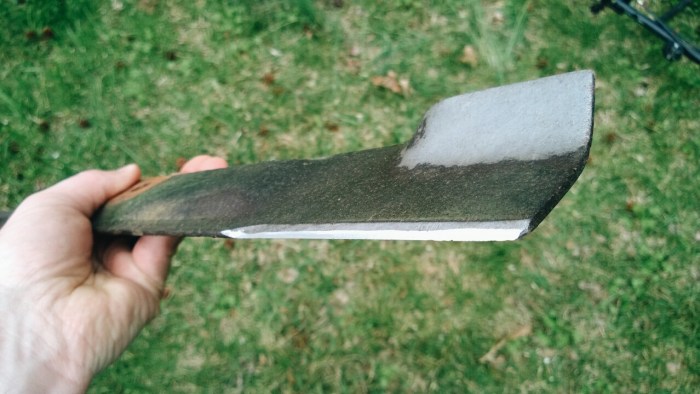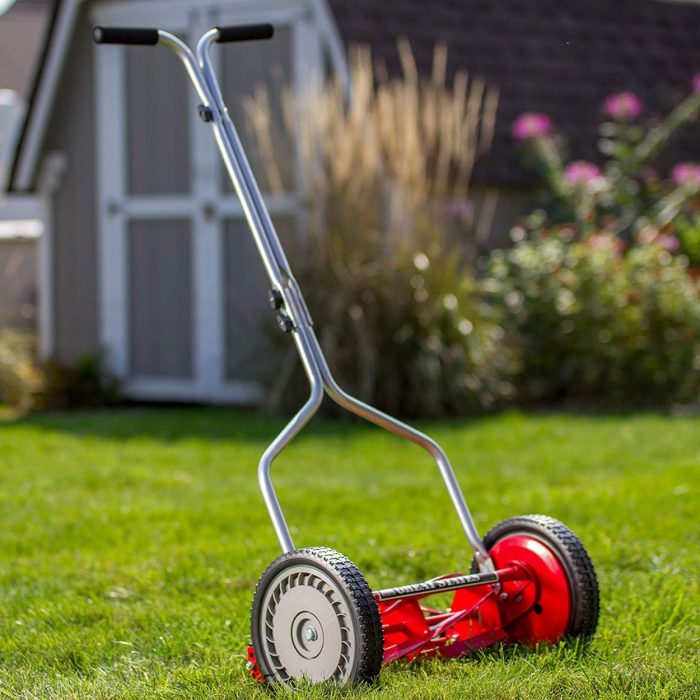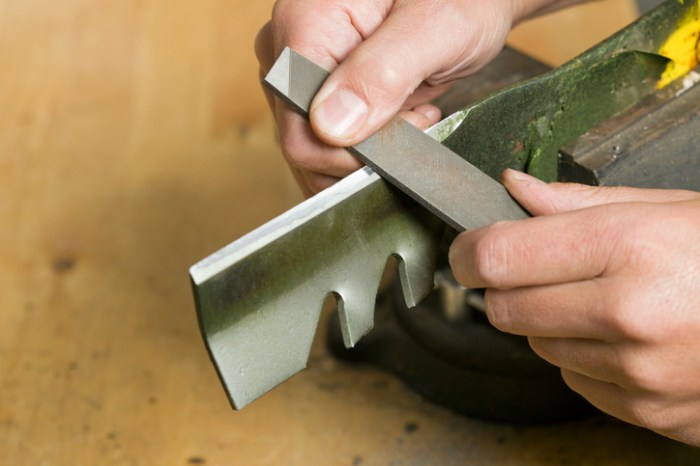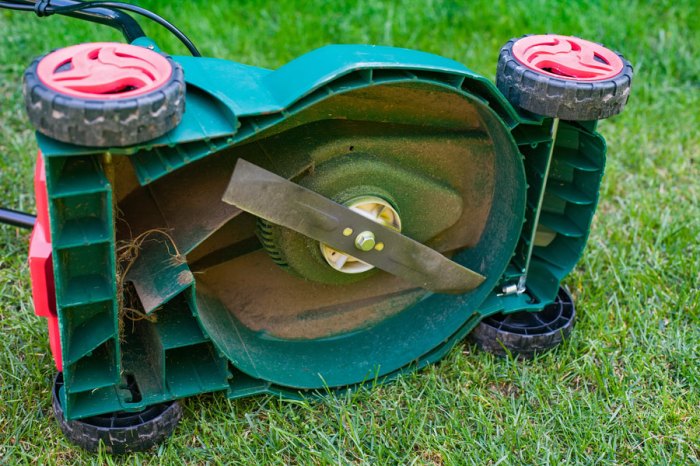A rotary mower blade cuts by violently impacting the grass. – As rotary mower blades take center stage, this exploration delves into the captivating world of their violent impact on grass. Through a comprehensive analysis, we uncover the fundamental principles, efficiency factors, and safety considerations that govern these essential gardening tools, providing a comprehensive understanding for both enthusiasts and professionals alike.
Rotary mower blades employ a unique cutting mechanism that relies on high-speed impact to sever grass blades. The design of the blade, with its sharp edges and angled orientation, plays a crucial role in achieving clean and efficient cuts. Understanding the relationship between blade speed and cutting efficiency is paramount, as faster speeds contribute to cleaner cuts and reduced grass tearing.
1. Impact-Based Cutting Mechanism: A Rotary Mower Blade Cuts By Violently Impacting The Grass.

Rotary mower blades employ a fundamental principle of cutting grass through violent impact. These blades are designed with a sharp, curved edge that spins rapidly, creating a high-velocity impact when it comes into contact with grass blades. This impact severs the grass, producing a clean and precise cut.
The design of the blade plays a crucial role in the cutting process. The curved edge allows the blade to gather grass blades and guide them into the impact zone, ensuring a clean and efficient cut. The blade’s sharpness is also essential, as a dull blade will tear the grass rather than cutting it.
2. Blade Speed and Efficiency
The speed at which the rotary mower blade spins has a direct impact on cutting efficiency. Faster blade speeds result in cleaner cuts and reduced grass tearing. This is because the higher velocity of the blade allows it to sever the grass blades more cleanly, minimizing the chance of tearing or ragged edges.
Optimal blade speeds vary depending on grass type and mowing conditions. For most grasses, a blade speed of 1800-2500 revolutions per minute (RPM) is recommended. However, for thicker or taller grass, higher blade speeds may be necessary to achieve a clean cut.
3. Sharpening and Maintenance

Maintaining sharp rotary mower blades is essential for optimal performance. Dull blades will tear grass instead of cutting it, leading to a poor-quality cut and increased wear on the mower. Regular sharpening is therefore crucial to ensure the blades remain sharp and effective.
Sharpening rotary mower blades can be done using a variety of tools, including a bench grinder, angle grinder, or hand file. It is important to follow the manufacturer’s instructions and wear appropriate safety gear when sharpening blades.
The frequency of sharpening required depends on usage and grass conditions. For regular mowing, sharpening every 20-25 hours of use is recommended. However, if the mower is used in abrasive conditions, such as on sandy or rocky soil, more frequent sharpening may be necessary.
4. Safety Considerations

Rotary mower blades are sharp and can cause serious injury if not handled properly. It is therefore essential to take appropriate safety precautions when using rotary mowers.
- Always wear protective gear, including safety glasses, gloves, and earplugs.
- Inspect the mower before each use and ensure the blades are sharp and securely fastened.
- Never operate the mower on wet or slippery surfaces.
- Keep children and pets away from the mower while it is in operation.
- Store the mower in a dry, secure location when not in use.
5. Comparison to Other Mower Types

Rotary mowers are one of the most common types of lawn mowers due to their versatility and affordability. However, there are other types of mowers available, each with its own advantages and disadvantages.
| Mower Type | Cutting Mechanism | Advantages | Disadvantages |
|---|---|---|---|
| Rotary Mower | Spinning blades | Versatile, affordable, easy to use | Can tear grass, not suitable for fine lawns |
| Reel Mower | Rotating blades that cut against a stationary blade | Produces a clean, precise cut, suitable for fine lawns | More expensive, requires more maintenance |
| Sickle Bar Mower | Reciprocating blade that cuts grass | Durable, can handle tall grass and weeds | Noisy, requires more power to operate |
Questions Often Asked
How often should rotary mower blades be sharpened?
The frequency of sharpening depends on usage and grass conditions. Generally, blades should be sharpened every 20-25 hours of operation or more frequently if the grass is thick or abrasive.
What safety precautions should be taken when using rotary mowers?
Always wear protective gear, including safety glasses, earplugs, and gloves. Ensure the mower is in good working condition, and never operate it on wet grass or slopes.
What are the advantages of rotary mowers compared to other mower types?
Rotary mowers offer high efficiency, versatility, and adaptability to various grass conditions. They are also relatively easy to maintain and operate.